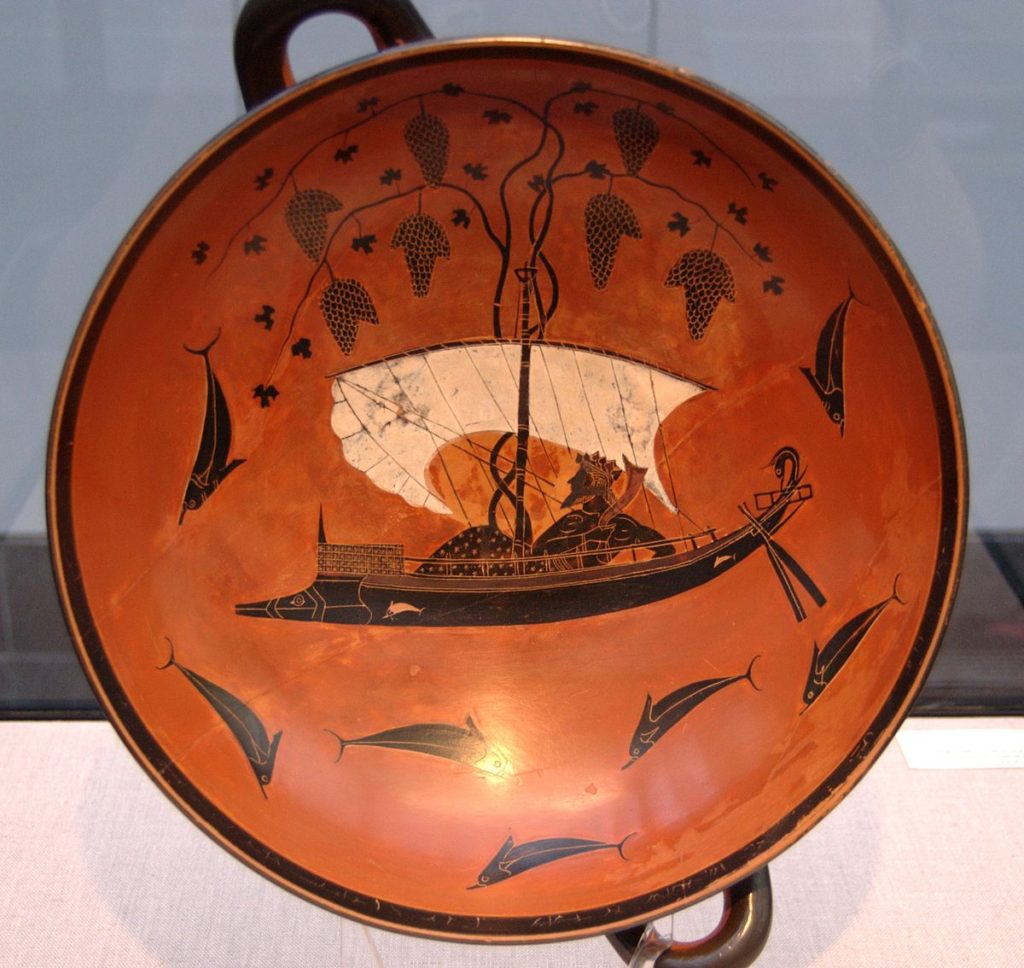Pindar Fr. 75 Dion. Hal. de comp. verb 22
Translated by Steven J. Willett

Note: Here is a list of names in the fragment with short explanations.
incense-fragrant navelstone: Perhaps the the alter of the twelve gods in the agora; The meaning of “from Zeus” and “secondly” is unclear; Bromios is “Loud-Roarer” and Eriboas is “Loud-Shouter,” both are cult names of Dionysus; Kadmeian women I.e. of Zeus and Semele; Horai are the goddesses of the seasons.
Come to the chorus, Olympians,
send upon it your glorious grace, you gods,
who approach the much-trodden, incense-fragrant navelstone
in the holy city of Athens
and the richly adorned famous agora;
take your share of plaited violets and songs culled in spring,
and look on me proceeding from Zeus
with the radiance of songs secondly
to that ivy-knowing god,
whom we mortals call Bromios and Eriboas
singing to the offspring of the highest fathers
and of Kadmeian women.
And like a seer distinct signs do not escape me,
when the chamber of the violet-robed Horai is opened,
nectar-bearing plants lead to a sweet-smelling spring.
Then are cast, then on the ambrosial earth lovely
tresses of violets, and roses are mixed with hair,
and divine voices of flowers resound with pipes,
and choruses approach Semele of the circling headband.

One might say this Greek sought to be woke, but at an altogether different level. He really did believe in the Gods. No place for skin color in these lines.
Thank you Mr Willett
Would I be correct in thinking the beautiful example of black figure pottery illustrated is a drinking bowl of the kind in use at Dionysian festivals – those at which such dithyrambic verse would be recited? Much load-roaring and load-shouting must have been necessary in order to be at one with the god of revelry I imagine.
Also, is it just me or is the recumbent helmsman and his craft evocative of an ancestral version of TTG’s Mersea Duck Punt, complete with steering oars?
It is a black-figure kylix drinking cup by Athenian potter Exekias dating 540~30BC. Dionysus is lying in a boat whose mast has sprouted vines while dolphins swim about it. The following article gives full details: https://en.wikipedia.org/wiki/Dionysus_Cup